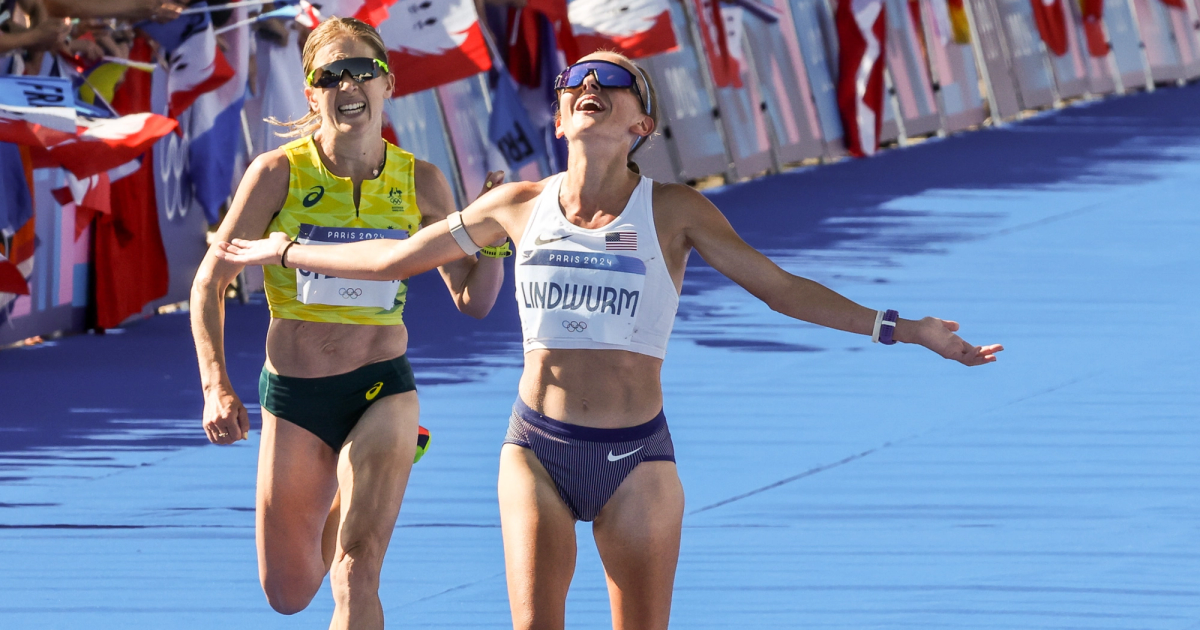By Rachel DaDamio
August 27, 2024
While consuming over five hours of Olympic marathon replay coverage, I was inspired by the performances of so many US athletes on such a grueling course in Paris. The US had three athlete’s finish in the top 15 of the marathon - Dakotah Lindwurm (12th) on the women’s side and training partners Conner Mantz (8th) and Clayton Young (9th) on the men’s side. From my couch, I was impressed and wanted to understand how these performances stacked up against expectations.
To make the comparison, I first needed to determine an “expected” finish place for each athlete. I ordered all the athletes by their world ranking going into the Olympic marathon and assigned them an expected finishing place in that order – an athlete’s world ranking position within the field became their expected finish place (1). For example, Emily Sisson, the top-ranked American in the field, had a world ranking of 60 going into the marathon. Her world ranking was the 16th best in the field, so her expected finish place was 16th.
The top Americans all significantly outperformed their expected place, as highlighted in the table below.

Dakotah Lindwurm, who upset many seasoned American marathoners to finish third at the US trials, finished 16 places above expectation, even outperforming the expected finish of Emily Sisson by four places! Clayton Young had the biggest overperformance among the American marathoners by finishing 9th, 23 places above his expected finish place of 32nd (2).
After completing this deep dive in the marathon, I wanted to expand the analysis to include all track & field events. I wondered how often the top-ranked athletes won gold and which athletes had the biggest upsets in terms of world ranking.
Athletes who are expected to finish first (according to world ranking) do so 60% of the time (3). The chart below illustrates the distribution of Olympic performances among top-ranked athletes across 38 events (all events aside from the heptathlon & decathlon).
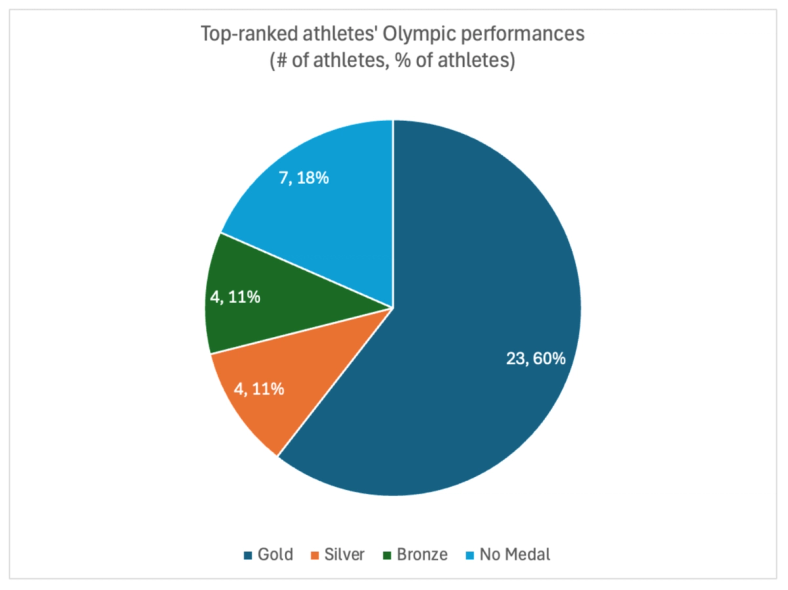
Next, I wanted to see if this trend remained consistent across event groups. I divided events into five groups – distance, middle distance, sprints, jumps, and throws. As displayed in the graph below, performance of top-ranked athletes varies by event group – top-ranked athletes won gold more often than average in jumps and middle distance, and less often than average in distance and sprints.
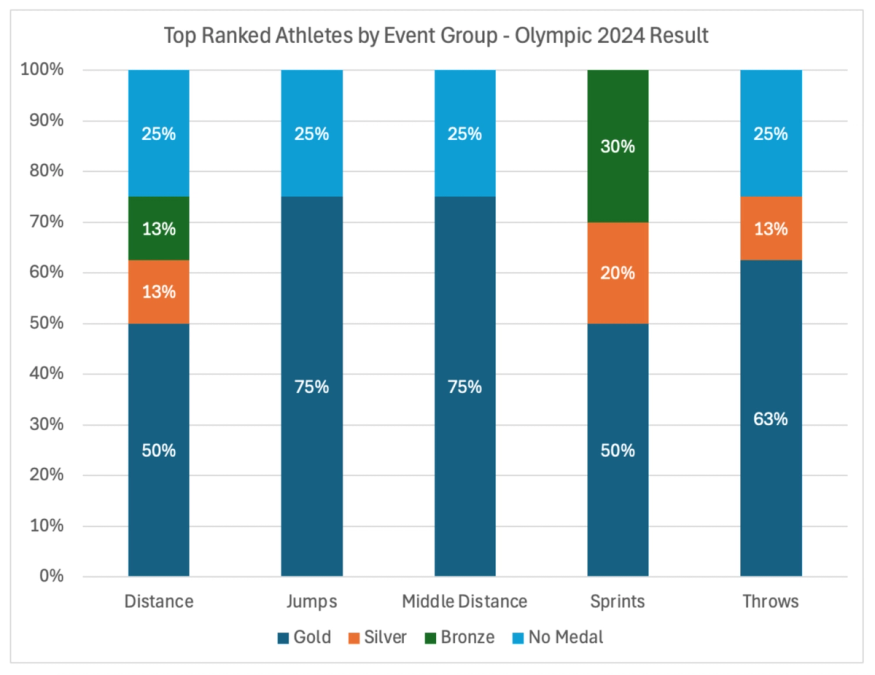
Additionally, 25% of top-ranked athletes finished outside the medals across most event groups. Sprints are the exception, where no top-ranked athlete finished lower than third. This result in the sprints could be due to the less tactical nature of sprints compared to other running events. While the strategy for middle distance & distance Diamond League races or World Major marathons can vary considerably from the tactics we see at the Olympics, sprint tactics remain consistent across competitions.
When we expand the event group analysis to include performances from the athletes with top three world ranking positions in their respective events, we continue to see variation in trends across event groups.
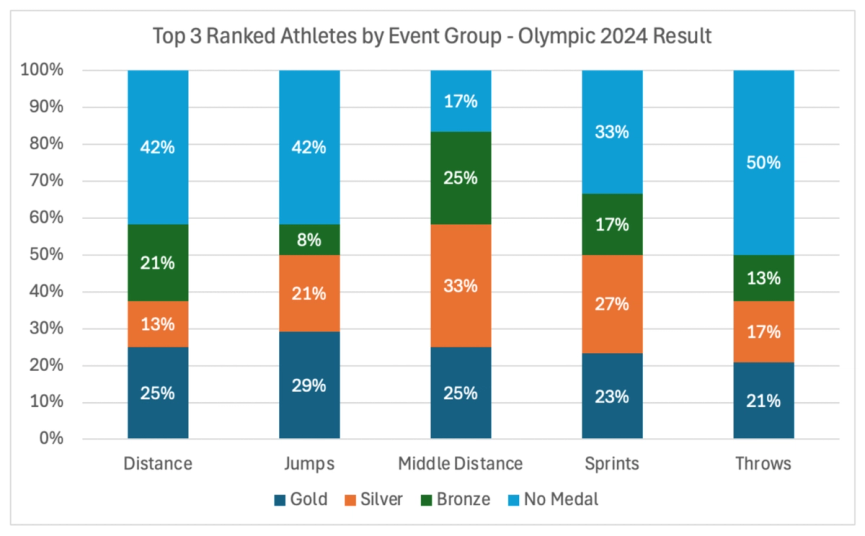
Middle distance had the lowest proportion of top three ranked athletes finishing out of the medals, and throws had the highest. The women’s shot put was the only event where none of the top three ranked athletes in the final (Sarah Mitton, Lijiao Gong, and Jessica Schilder) medaled (4). Alternatively, there were several events where the top three ranked athletes took home all the medals: the men’s 400m hurdles, the men’s and women’s 800m, and the women’s discus. In the men’s 800m and women’s discus, not only did the top three ranked athletes all earn medals, they finished in the exact order of their expected places.
It’s fun to watch the top-ranked athletes win medals, but it can be even more thrilling when an athlete exceeds expectations to end up on the podium. The following graph shows the medal count by expected finish place.
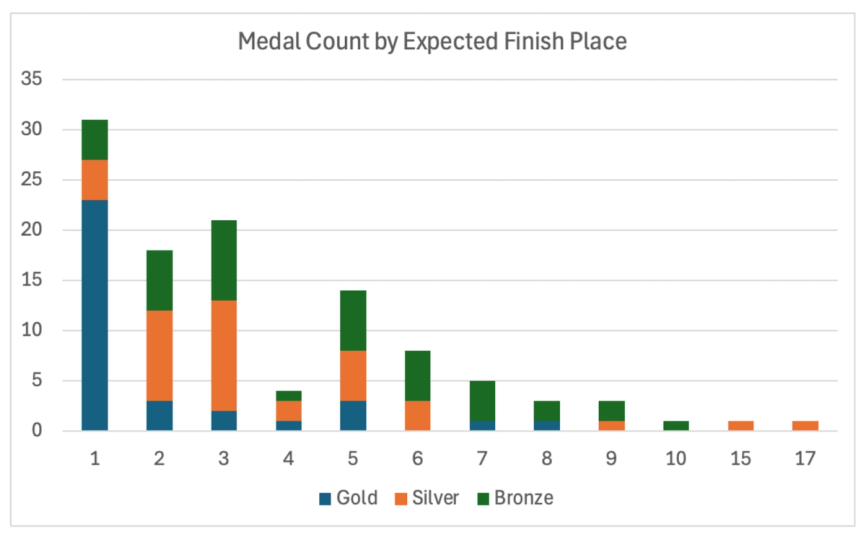
While big upsets are rare, they do happen. Only two athletes came away with medals having expected finish places outside the top 10 – Kenneth Rooks (ranked 15th) in the men’s steeplechase and Ronald Kwemoi (ranked 17th) in the men’s 5000m. Both athletes earned silver. Among the gold medalists, the biggest upset was Roje Stona in the men’s shot put, who came in with the 8th highest world ranking in the field. For bronze, Grant Fisher outperformed his 10th place expected finish in the men’s 10,000m to bring home his first of two medals in this year’s Olympics.
Whether it is Kenneth Rooks sprinting fearlessly for an unexpected medal in the steeplechase or Noah Lyles living up to hype in the 100m, track & field at the Olympics never fails to entertain.
Notes:
1. I originally used personal bests (PB) to determine expected finish, but some race results are excluded based on World Athletics criteria. For example, Hellen Obiri’s PB is listed as 2:25:49 on the start list. However, she ran over four minutes faster (2:21:38) when she won the 2023 Boston Marathon. The Boston Marathon course has an elevation drop which exceeds the threshold to be eligible for entry standards.
2. For some additional context, when Molly Seidel won Bronze in Tokyo, her world ranking of 199th was the 36th best in the field, so she outperformed her expected finish by 33 places.
3. There were four gold medalists that did not have world rankings going into the Olympics – Beatrice Chebet (10000m - Women), Winfred Mutile Yavi (3000m steeplechase - Women), Arshad Nadem (Javelin Throw - Men), and Sydney McLaughlin-Lavrone (400m hurdles - Women). Many of these athletes were favored to win their respective events but did not race enough to receive a world ranking prior to the Olympics.
4. Paul Hof-Mahoney gives an extensive summary of the women’s shot put on Torch Talk Day 9, stating “this was a very topsy turvy competition” due to inclement weather and big upsets.
___________________
Keep up with all things track and field by following us across Instagram, X, and YouTube. Catch the latest episodes of the CITIUS MAG Podcast on Spotify and Apple Podcasts. For more, subscribe to The Lap Count and CITIUS MAG Newsletter for the top running news delivered straight to your inbox.

Rachel DaDamio
Rachel DaDamio ran at the University of Notre Dame and moved to Chicago after graduating to work as a data scientist, where she’s also training for a fall marathon.
